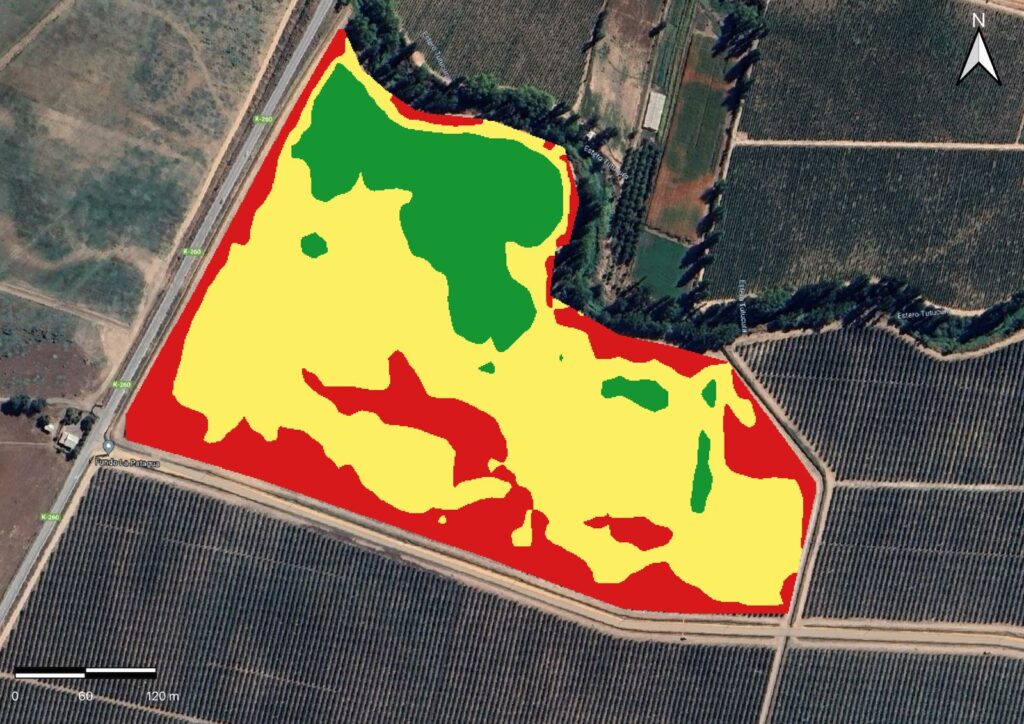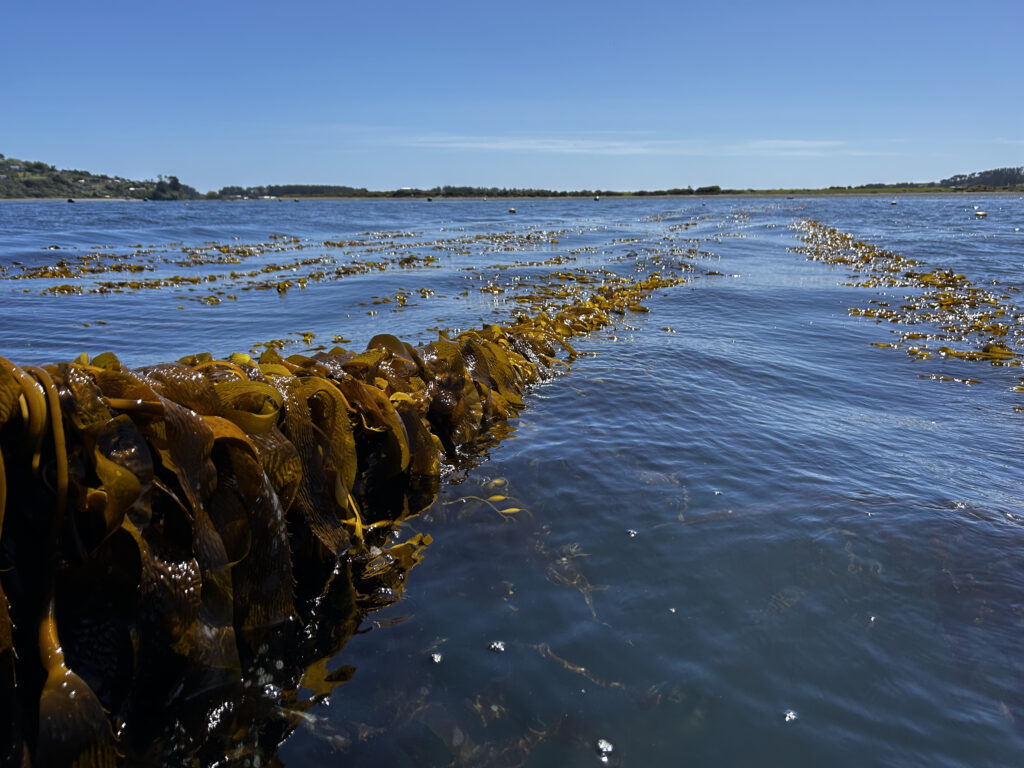However, post-harvest is the beginning of the following season, and it should be understood that the concept of post-harvest does not refer, particularly, to the end of the harvest, but to the post-harvest of the trees, to a physiological change in the plants. The physiological post-harvest responds to some ecological stimulus and is comprised, more or less, between 80 to 150 days after full bloom (DDPF).
Paying special attention to the orchard during post-harvest is essential, since during this period many technical, physiological and metabolic processes occur, such as the development of roots that will provide reserves for the next season; the formation of flowers in new fruit centers and their recovery in permanent fruit centers; the capture or the option that plants have to capture CO₂ and build reserve sugars through photosynthesis, releasing water into the atmosphere, among others. This virtuous cycle generates all the reserve levels that will support the next season, the first 40 days from full flower onwards, and this is directly related to productive and technical factors that cannot be overlooked.
Among these factors is monitoring of spider mites, so that they do not cause early defoliation in orchards and have a negative effect on the interruption of all physiological metabolisms of plant cooling and CO₂ uptake to obtain sugars; everything related to root biostimulation, foliar and soil nutrition is also relevant, and of course irrigation, considered one of the most relevant factors during post-harvest, because with a bad strategy and programming of this, everything that can be carried out in parallel will be wasted.
It should also be noted that post-harvest is the prelude to a new stage in the cherry tree's phenological development cycle: dormancy, which will directly depend on what happens in the orchard during post-harvest, on agronomic management and on the signals given to the plants so that they understand that they are going to sleep.

March, known for being the transition month between post-harvest and dormancy, is the time that marks the end of orchard recovery programs, both from a nutritional, soil and root point of view. On the other hand, foliar corrections must be completed, based on the analyses carried out at the beginning of the post-harvest.
Dormancy, specifically, is the winter lethargy of plants, in which the accumulation of cold hours occurs, which are related to the use of the reserves that the trees have to start the following season, in favor of the productive objective of achieving their potential in terms of quantity, quality and condition of fruit.
It is essential to analyse this period from both a physiological and theoretical point of view, as this stage can be defined in several ways. Physiologically, a plant begins dormancy when it has 50% of fallen leaves (yellow leaf = fallen leaf) and this should coincide with May 1, the date when the counting of cold hours officially begins.
Important signs for gardens
Irrigation is, without a doubt, one of the main signals that must be given to cherry orchards for a correct entry into dormancy; the distribution of water must always be considered, and with greater attention in this phase, beyond the amount to be replaced, in terms of evapotranspiration demand; taking into account its decrease from the volumetric point of view of the soil, of the roots of the different rootstocks.
Below are a number of aspects to consider:
- Atmospheric demand and water consumption of the plant are declining towards the end of February.
- Demand is expressed in evapotranspiration and not in ambient temperature, which is why high temperatures in March or April are not comparable to those in the summer period, as they only last a couple of hours.
- From March onwards, nights and mornings are colder and more humid, which should be considered when reducing the frequency of irrigation towards the month of March.
It is important to note that the first important sign that declares dormancy is the summer solstice, that is, the change of season, which normally occurs between December 20-22. This is when the processes of lignification and pre-dormancy begin, which in physiology is defined as “cold tolerance”.
The change in photoperiod influences various aspects; annual materials that grow from the end of September (and develop for about 70 days) already have lignified basal sections; this also affects the beginning of flower induction; the plant enters a process of accumulating reserves, changing sap flow and begins to prepare for dormancy.
On the other hand, the first autumn frost, which in physiology is known as “freeze resistance”, enhances and ensures dormancy; this occurs when there is already development of wood, secondary growth, and it is the trigger for the plant to shed its leaves and go to sleep voluntarily.
Although there are still several weeks to go before cherry orchards enter dormancy, it is always necessary to keep in mind what the plants should show before this winter lethargy. In this context, the orchards should show fruit centers with well-formed stalks, very smooth bracts, still with the presence of leaves (the buds are always axillary to the leaves), and as a general rule, present at least 50% of fallen leaves by May 1, considering that yellow leaf equals fallen leaf.
If the plant begins its dormancy on this date, it will allow it to take full advantage of winter lethargy and the accumulation of cold hours, considering that this accumulation occurs between May and July, with June being the most important month in terms of accumulation of cold hours. However, it should be considered that good dormancy is not only determined by the accumulation of cold, but also by how short the photoperiod is, that is, how much light there is.
The months of January and February are essential for a correct entry into dormancy, since during this period all nutritional recovery takes place, both foliar and soil, to then think about stopping the nutritional programs at the beginning of March. This suspension is essential, since it gives the plant a clear signal that it will soon have to go to sleep.
But every season the same question arises: What to do if the above strategies do not provide a response? If by April 20, orchards do not have 10-20 % of yellow leaves, decisions must be made on how to accelerate this process; these strategies will be addressed in a new article that will be published soon.








